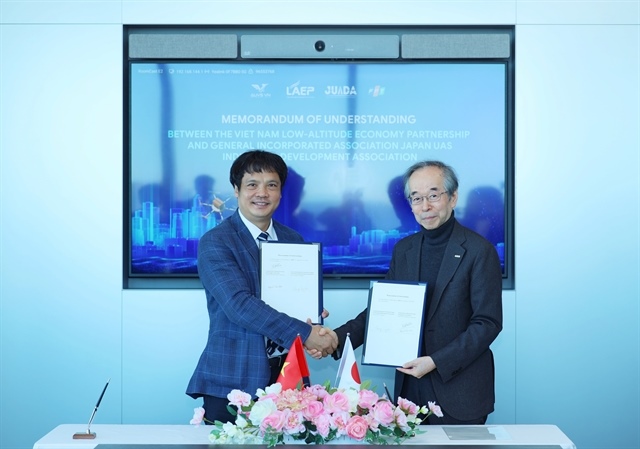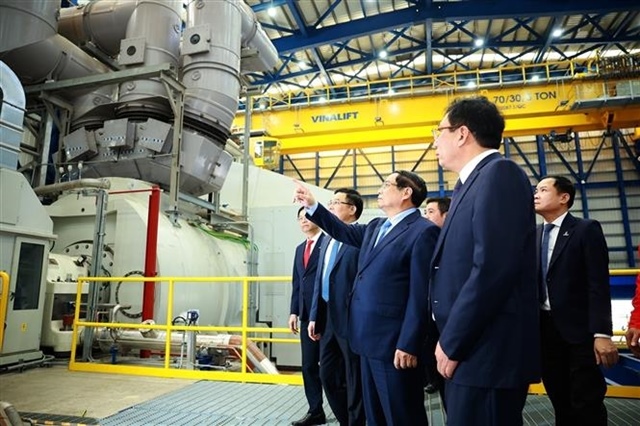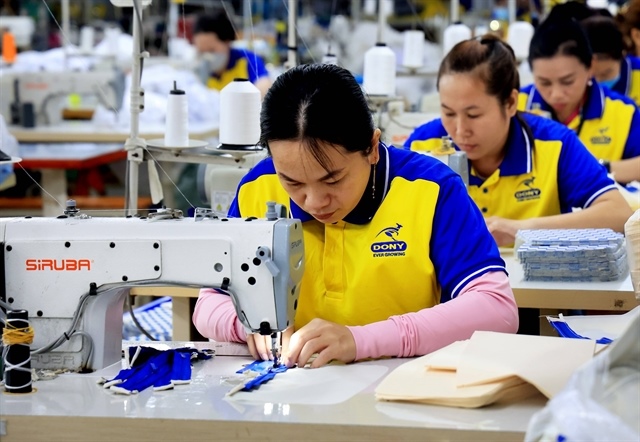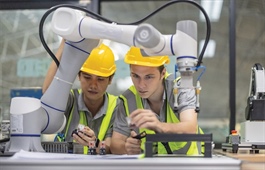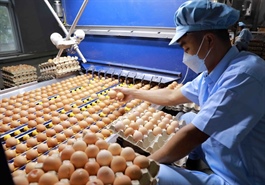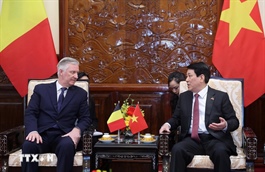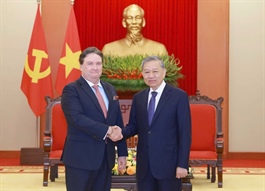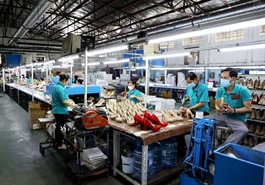Smart Chinese manufacturing forms a win-win collaboration
Smart Chinese manufacturing forms a win-win collaboration
Chinese investors are expanding investment in smart manufacturing. At the Vietnam Global Manufacturing Forum in Hanoi last week, vice chairman of the Vietnam Association of Foreign-Invested Enterprises Nguyen Van Toan spoke with VIR’s Kim Oanh about the potential for capital inflow and the opportunities for domestic manufacturing groups.
How do you evaluate the potential for attracting capital from China into smart manufacturing?
Vietnam has with significant potential for market development, having signed numerous free trade deals that serve as a ticket to export Vietnamese goods to many markets worldwide.

Nguyen Van Toan, vice chairman of the Vietnam Association of Foreign-Invested Enterprises |
HSBC also highly regards Vietnam’s investment environment, noting that an index on restrictions on foreign direct investment shows Vietnam as the second most open economy in the region, behind only Singapore, while its statutory corporate income tax rate of 20 per cent offers a comparative advantage over markets like China, Philippines, Malaysia, and Indonesia.
Vietnam is one of China’s major trading partners in the ASEAN region. However, from an investment perspective, the figures from the past have not fully reflected the true potential.
The momentum of investment capital flows from China, as well as the list of investors, has been shifting since the second half of 2023, becoming more evident in 2024. Capital flows from mainland China, Hong Kong, and Taiwan are accelerating. This is driven by the deep similarities between the two economies, fuelled by the ongoing transformation and realignment of global supply chains.
The wave of production relocation from China by corporations has become more pronounced. To date, numerous projects worth up to billions of US dollars, from Chinese companies such as Goertek, BYD, Radian, Brotex, Wingtech, Deli, and Trina Solar, have established a presence in Vietnam.
Chinese smart manufacturing enterprises are genuinely interested in Vietnam’s investment environment, rather than it being a one-sided effort by Vietnam to pull in high-quality capital from China. This is a win-win collaboration.
What specific requirements do Chinese high-tech enterprises have when investing in Vietnam?
Foreign investors in general, and Chinese investors in particular, all desire to implement their projects as quickly as possible. Therefore, they need all procedures – ranging from licensing and land clearance to factory construction – to be resolved swiftly.
Secondary investors also want factory construction to be expedited so they can disburse funds and begin production soon. For large, reputable companies, land rental costs are not the decisive factor in choosing an investment location.
I witnessed cases where component manufacturing plants went from groundbreaking to exporting their first container of goods in just six months, with modern and impressive facilities, showing determination in implementing projects.
How will this shift create opportunities for domestic manufacturing groups to participate in the global supply chain?
When attracting foreign investment capital, the most popular question is what benefit does Vietnam have to gain from this activity. At the meeting in mid-January, Party General Secretary To Lam also once again raised this question.
The answers come from the ability and opportunity to receive technology transfers from foreign corporations, participate in the global supply chain, and enhance the various capabilities of domestic enterprises.
Vietnamese companies can access modern technology by forming joint ventures with foreign corporations. Through this approach, both leadership and management teams would have the chance to participate directly in company operations and machinery management, allowing them to learn and elevate their skills. After all, the recipient of technology transfers must also have sufficient capacity to absorb and operate the technology smoothly.
However, it’s worth noting that establishing joint ventures in the manufacturing sector is not an easy task. About 10-15 years ago, when foreign investors first came to Vietnam, they were unfamiliar with the investment environment and thus sought local partners to handle legal paperwork and land issues.
However, in recent years, investment promotion and consulting services have flourished, offering reliable, comprehensive packages to foreign investors. As a result, manufacturers are less inclined to form joint ventures with domestic companies.
The solution lies in domestic manufacturing enterprises proactively enhancing their capabilities so that foreign investors recognise the value of collaboration.
- 14:34 02/04/2025




